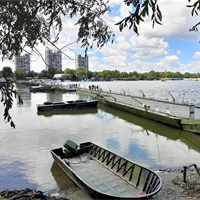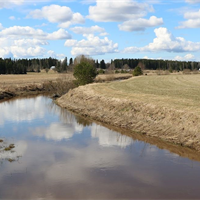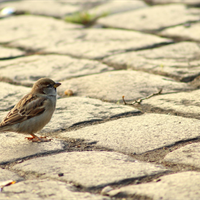Bohemian Spirit of the Old Belgrade | Old Belgrade Stories
- Ratomir Veselinović
- 6 min
- 21 January 2022.
- Entertainment
„Skadarlija puna dima, još mi noću ne da mira
još u mutnim tutnje snima Dva jelena, Tri šešira...“
Gustav Krklec
No, this is not a nostalgic story about old and better times, about a more beautiful life and youth... This is a story about the forgotten spirit of taverns, about tightly checkered tablecloths, wine carafes, the smell of cooked dishes, and the inevitable chatter of the tavern.
It would be difficult to explain briefly to a stranger who is unfamiliar with Belgrade and our people what a kafana is and what it meant to our society. It meant a lot, from culture to science to politics. They were also a kind of urban landmarks. Even today, old Belgraders orient themselves towards, now non-existent taverns, as if following invisible signposts. You often hear, "it's next to Three Tobacco Leaves, second intersection on the left..."
Belgrade taverns have always been gathering places for all sorts of people, from market workers, rascals, and local pickpockets to professors, doctors, and academics. Often, these different groups mingled, leading to arguments and quarrels. But it usually ended with a round of drinks.
I will try to create a sketch of old Belgrade taverns. It's not easy; one must go back to a time when Belgrade and Belgraders were different, and life had a slower pace. Like any sketch, this will only be a brief outline of old Belgrade taverns, a small introduction to that magical world. But let's start from the very beginning.
Taverns in this area have a long tradition, perhaps the longest in Europe. The first establishments of this kind in Belgrade were recorded in the early 16th century as aščinicas and mehanas. They were places for drinking coffee, a beverage brought to us from the East by Turkish conquerors. Those old Turkish aščinicas had low ceilings and no tables. During the Austrian rule in the 18th century, there were four breweries and even around 140 inns in Belgrade. However, not all of them were kafanas. There were also taverns, mehanas, inns, and aščinicas. Each offered different services, but what they all had in common was that they served drinks and gathered people from various backgrounds. Certain trades had their own places for socializing, and it was difficult to enter that circle.
A significant change in the development of taverns occurred during the 19th century. Among other things, they became places of trade, so it was not uncommon to buy other goods besides the drinks and food they served. During this period, taverns also became meeting points for traders who conducted various business deals in their dimly lit interiors. In Belgrade, there were as many as 199 taverns and mehanas in 1836. The first modern European-style tavern was opened in 1848 by the Swiss man Peter Koran in Savamala.
Although it is difficult to associate taverns with culture, what theater meant for the development of modern society in developed European countries, here it was precisely the tavern. It was a place that brought together all layers of society, where European life and style found the easiest way to reach the citizens. Boundaries were pushed in these places. The first theater performances were staged in taverns, the first electric light bulb illuminated the interior of the Hamburg tavern (Proleće) at the corner of today's Masarikova and Kneza Miloša streets. The first telephone conversation took place in the Tri lista duvana tavern. The old Kolarac on Republic Square hosted the first book fair, and the first film projection was shown at the Zlatni krst tavern... Many political and historical decisions were made precisely on the checkered tablecloths, and citizen societies were founded behind them, some of which still exist today.
The names of taverns are a special story. Kafedžijas (tavern owners) often included their own names or the names of famous personalities in the names, so there were taverns like Stevan Sremac, Branislav Nušić, Kod Tanaska Rajića, Tričkov's Tavern... You could even learn geography from the names of old taverns. There were those whose names evoked distant places such as Dardanelles, Venice, Geneva, Bosporus, Moscow, Paris, Odessa, Czech Crown, America... and there were also those from the surroundings like Kičevo, Žagubica, Dubrovnik, Deligrad...
The most famous one, however, is "?". The "Question Mark" is the oldest preserved tavern in Belgrade. This beautiful townhouse has been a tavern since 1825, and it has carried the name "?" since 1892. It is one of the few places where you can still feel the spirit of old Belgrade.
We must not overlook the famous Skadarlija street and its taverns, some of which still exist in almost unchanged form. Skadarlija, Belgrade's Montmartre, and the renowned Tri šešira, Dva jelena, Ima dana, Kod dva bela goluba... The cobblestone streets of Skadarlija still echo with the rhythm of great bohemians who left their best years of life there.
After World War II, the way of life changed, but taverns remained the main meeting places and venues for conversation over a glass. New ones emerged, and there are many from the past. The most famous ones were Poslednja šansa, Madera, Zora, Kolarac, Brankovina, Bled, Zlatno burence, Proleće, Lipov lad... The list could go on indefinitely. The famous Belgrade Bermuda Triangle composed of Šumatovac, Pod lipom, and Grmeč, next to which were the editorial offices of Politika, Borba, and Radio Belgrade, is widely known. An urban legend says that a large number of journalists and actors disappeared in that magical triangle for several days at a time...
It was a time when pubs, bistros, and buffets emerged... They served only drinks and often had only a bar and a few tables.
The specialties served in serious taverns were mainly grilled dishes, ćevapčići, pljeskavice (crackling!), ražnjići... Cooked dishes such as pihtije, kolenice, papci u saftu, pohovan mozak were presented to the guests... On the table, guests were often greeted with a basket of boiled eggs, salt, and pepper. Each tavern had its own specialty, so it was known where to try each dish.
The key figures without whom the tavern wouldn't be what it is are the waiters and cooks. Waiters maintained their dignity and restraint from their pre-war colleagues for a long time, performing their job in the most professional manner. They were highly respected and valued by the guests, and often became their personal friends. Notepads and pencils were tools that a good waiter couldn't imagine being without, and there were those who could remember several orders without writing them down. The main cooks were well-known throughout Belgrade, and it was well-known who made the best cooked cabbage and who was a master of tripice.
The buzz that arises in a tavern cannot be recreated in any other space. It is intoxicating, captivating, mostly mixed with smoke and the fumes of various alcoholic beverages. It makes it easy to fall asleep and even easier to engage in debates. The music, which creates the most beautiful ambiance in the buzz, should not be neglected. It is the music that allows for conversation, drinking, and celebration, all at the same time. Musicians who knew how to "find you" in a song and extract your last penny from your pocket in the most delightful way. Old-town orchestras still survive today in a few remaining taverns.
Today's tavern is the complete opposite of the ones mentioned above. In recent decades, the most famous ones in the city center, which wrote their history on their walls, have been closing down. Along with them, the bohemians, dignified waiters, and traditional tavern specialties have disappeared. Places with checkered tablecloths and wooden chairs are opening instead. At first glance, it all looks the same. But it's not. The old spirit of Belgrade, which was built for centuries in small, stuffy, and dimly lit taverns, is missing.
Like every sketch, this story remains unfinished...


